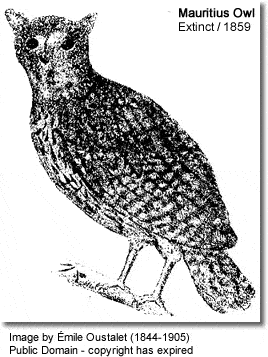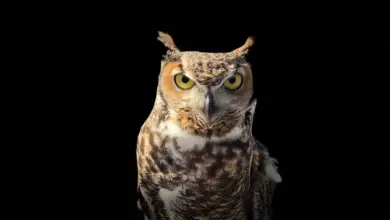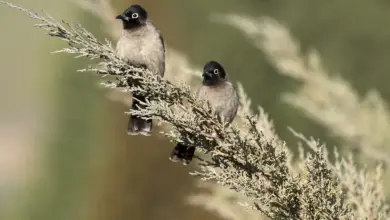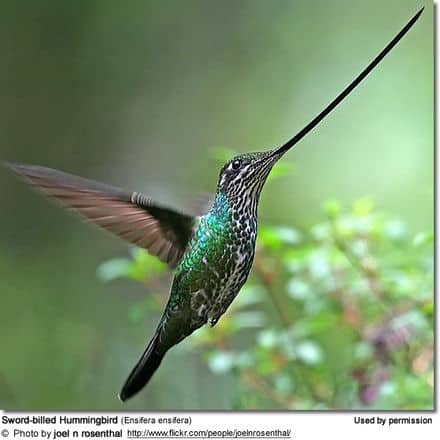Mauritius Owls, aka Commerson’s, Sauzier’s or Newton’s Owls
Owl Information … Index of Owl Species … Photos of Various Owl Species for Identification
The extinct Mauritius Owl (Mascarenotus sauzieri), also called Commerson’s, Sauzier’s, or Newton’s Owl, was endemic to the Mascarene island of Mauritius. It is known from a collection of subfossil bones, a detailed sketch made by de Jossigny in 1770, a no less detailed description by Desjardins of a bird shot in 1836, and several brief reports about owls, the first being those of Van Westzanen in 1602 and Matelief in 1606.
No descriptions of owls were recorded between the mid-17th and the late 18th century. This led to considerable confusion, especially since the bones were referred to as ear tuft-less Strix or barn owls, whereas the image and the description unequivocally show the presence of ear tufts. Thus, it was for a long time believed that 2 or even 3 species of owls occurred on the island. The supposed “barn owl” Tyto Newton was described from tarsometatarsus bones of what probably was a male individual of this species, whereas the Mauritius Owl’s type specimen seems to be a bone of a larger female bird. But the bird was neither a Strix nor a Scops owl, and certainly not a barn owl. Instead, the Mascarene owls of the genus Mascarenotus were most probably a distinct evolutionary lineage related to the genus Ninox that evolved convergently to Scops or Asio owls. The Mauritius bird was the largest species of its genus, with a total length of about 60 cm. Its scientific name honors Théodore Sauzier, who made the first bones available for scientific study.
Extinction
The Mauritius Owl was the largest carnivore on the island before the start of human settlement. Thus, unlike other local species of birds, it was not much affected by the introduction of predators such as cats, rats, and Crab-eating Macaques.
In the 1830s, the species seems to have been not uncommonly found in the southeastern part of the island, between Souillac and the Montagnes Bambous due east of Curepipe, with the last testimony of observations referring to several encounters in 1837.
However, as the cultivation of sugarcane and tea encroached upon its habitat, combined with reckless shooting, it disappeared rapidly. In 1859, Clark wrote that the bird was extinct.
Copyright: Wikipedia. This article is licensed under the GNU Free Documentation License. It uses material from Wikipedia.org … Additional information and photos added by Avianweb.
Please Note: The articles or images on this page are the sole property of the authors or photographers. Please contact them directly with respect to any copyright or licensing questions. Thank you.





